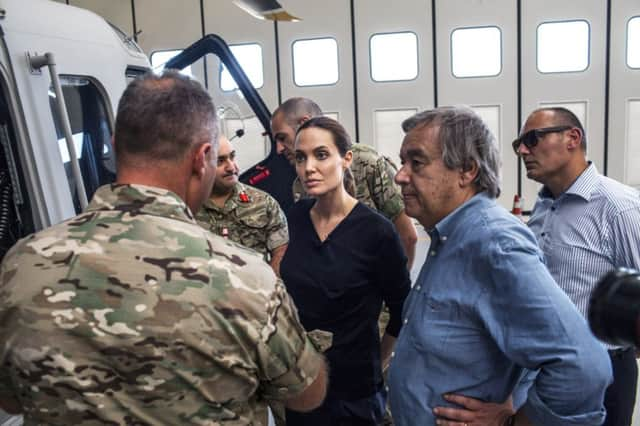500 die as human traffickers ram refugees’ boat


The disaster was just one of five fatal sinkings in the Mediterranean over the weekend, as Palestinians and Iraqis join the flow of Syrians and Africans escaping conflict and oppression.
The most dramatic sinking occurred on Saturday off the coast of Malta when 500 Syrians, Palestinians, Egyptian and Sud-anese migrants were allegedly ordered by traffickers to switch to a smaller boat after sailing from the port of Damietta in Egypt.
Advertisement
Hide AdAdvertisement
Hide AdThe group refused, fearing the boat was too small, prompting the traffickers – who were on a separate boat – to ram their vessel, causing it to sink.
The story was recounted by two Palestinians picked up by a freighter who were among the 11 survivors found floating in the sea.
“If this story, which police are investigating, is true, it would be the worst shipwreck in years… not an accident but a mass murder, perpetrated by criminals without scruples or any respect for human life,” the International Organisation for Migration said in a statement.
A spokeswoman for the UN’s High Commissioner for Human Rights (UNHCR) said that other survivors said the vessel may have been carrying between 300 and 500 passengers.
The UNHCR said four other vessels had also sunk at the weekend – one sailing from Egypt and three from Libya – bringing the total drowned or missing to between 550 and 750.
One of the vessels sailing from Libya had 250 passengers on board, with just 36 survivors found, said Libyan coastguard spokesman Qassim Ayoub.
“There were a lot of floating bodies but a lack of resources meant we could not fish out the corpses, especially as it was starting to get dark. Our priority was to rescue the survivors,” he said.
Around 120,000 migrants have made the crossing to Italy this year – more than double the 60,000 who arrived last year – but 2,500 have drowned trying, including 30 who died of fuel fumes when they were packed into the hold of a vessel in June.
Advertisement
Hide AdAdvertisement
Hide AdItaly’s deputy foreign minister, Lapo Pistelli, described this weekend’s sinkings as “the umpteenth daily massacre, a tragedy that knows no end”.
Carlotta Sami, a spokeswoman for the UNHCR in Rome, said that Iraqis and Palestinians fleeing Gaza were adding to the migrant flow, but added that a key cause of recent deaths was the chaos caused by militia fighting in Libya, a normal departure point for migrants, who pay around £600 for the crossing.
“More Syrians are trying to leave from Egypt instead, which is a longer and more dangerous crossing, and they are being forced to switch boats mid-journey, sometimes five or six times, possibly as they are handed over between different groups of traffickers,” she said.
Of the 1,000 migrants arriving in Italy daily, Syrians make up about 20 per cent, but Eritreans are the largest group, at some 25 per cent.
The Italian navy has been using ships, drones and even submarines to help spot and pick up migrants at sea since last October, when 366 migrants drowned in an incident off the Italian island of Lampedusa.
This weekend alone, the navy said it had picked up 2,380 migrants at sea. The operation has been criticised for encouraging migrants to risk the crossing, and Italian interior minister Angelino Alfano has said navy vessels will stop venturing out so far into the Mediterranean to search for migrant ships.
But Ms Sami called on Italy not to rein in its rescue mission. “It is not possible – things are getting worse,” she said.
UN special envoy and actress Angelina Jolie also threw her weight behind the rescue effort when she visited a naval rescue centre in Malta and met a Syrian couple who lost three children during the crossing.
Advertisement
Hide AdAdvertisement
Hide Ad“We all need to wake up to the scale of this crisis,” she said. “There is a direct link between the conflicts in Syria and elsewhere and the rise in deaths at sea in the Mediterranean.
“We have to understand what drives people to take the fearful step of risking their children’s lives on crowded, unsafe vessels; it is the overwhelming desire to find refuge.”